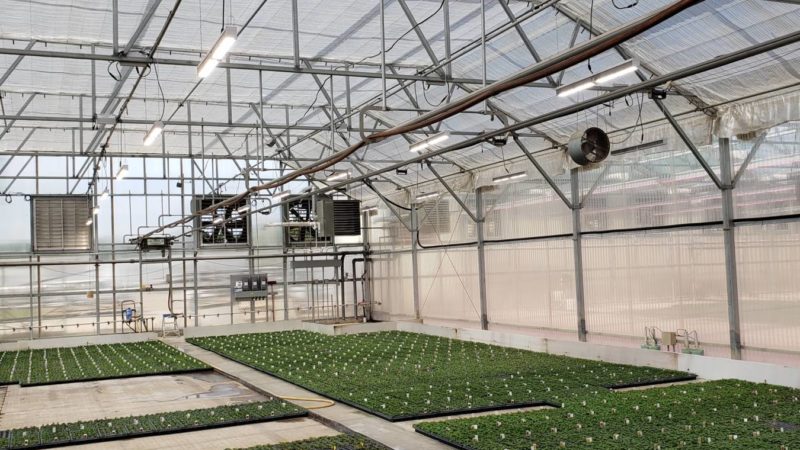
LEDs: More than μmol×J–1
Light-emitting diodes (LEDs) are known for their efficiency at converting electricity into light. For most plant applications, we are primarily interested in how much of the light emitted is within the photosynthetically active waveband (PAR), which is from 400 to 700 nm.
The term “efficacy” refers to this electricity-to-photon conversion. Efficacy is determined by dividing the quantity of light emitted by a fixture (technically speaking, the photosynthetic photon flux, in μmol×s–1) by the electricity consumed to emit that light (in watts, W). Because one watt equals one joule per second (J×s–1), the unit for efficacy is μmol×J–1.
For good reason, lighting companies have been focusing on developing fixtures with high efficacies. Energy costs decrease as fixture efficacies increase. In addition, utility companies often provide incentives when installing an energy-efficient lighting system. While efficacy is a very important consideration when selecting a light fixture, there is more to them than just their μmol×J–1.
Light spectrum. One of the most challenging aspects of selecting an LED fixture is its spectral emission. Some fixtures are primarily composed of white (broad-band) LEDs, while others have only specific waveband (narrowband) LEDs such as blue and red. Beyond economics and efficacy, arguably the greatest considerations are the percentage of blue light (for plants) and the color-rendering index (for people).
From a plant perspective, blue light plays a dominant role in regulating extension growth as well as the concentration of pigments that influence leaf color and secondary metabolites. In many high-intensity lighting situations, at least a moderate percentage of blue light (such as 10%) inhibits extension growth, which is usually desirable for production of ornamentals. However, too much blue light can create plants that have bronze or purplish leaves. From a human perspective, fixtures that include white LEDs have a higher color fidelity and create a more pleasant environment than fixtures that have only blue and red LEDs.
Light uniformity. The number, height and spacing of fixtures depends on the LED product. Usually light uniformity increases as the fixture number and/or distance above the crop increase. When lighting is not uniform, plants of a population become more variable. Over time, plants that receive more light than others need more water, and those under less light may flower later and need more growth retardant. Therefore, when you work with a plant lighting company or distributor, scrutinize the light maps that predict the distribution of light intensity over the growing area. Generally, up to a 20% variation in intensity is acceptable.
Form factor. LED products come in all shapes, sizes and light outputs. For supplemental greenhouse lighting, a goal is to minimize shading that is cast by light fixtures. When evaluating each LED solution, consider the number and size of the fixtures, as well as any accessories, that block sunlight from reaching crops below.
Protection from dust and water. Select from fixtures that have been certified by a nationally recognized testing lab and meet UL 8800 standards. This new safety certification designates that fixtures are safe for people, can operate in damp and hot environments, and are protected from dust and water.
Others. Additional considerations include cost, customer service, ease of installation, rated fixture longevity, product warranty and product availability. Ensure that fixtures were specifically designed for horticulture and seek out ones that are qualified horticultural lighting products by the DesignLights Consortium. In addition to meeting minimum energy efficiency and safety standards, this designation indicates products meet many other important technical metrics.
Growers are encouraged to work with multiple lighting companies and suppliers to obtain and evaluate several different lighting solutions specific to their operation. What might be best for one grower isn’t necessarily the best for another because of differences in location, greenhouse characteristics and crops grown, among others.


 Video Library
Video Library 




















